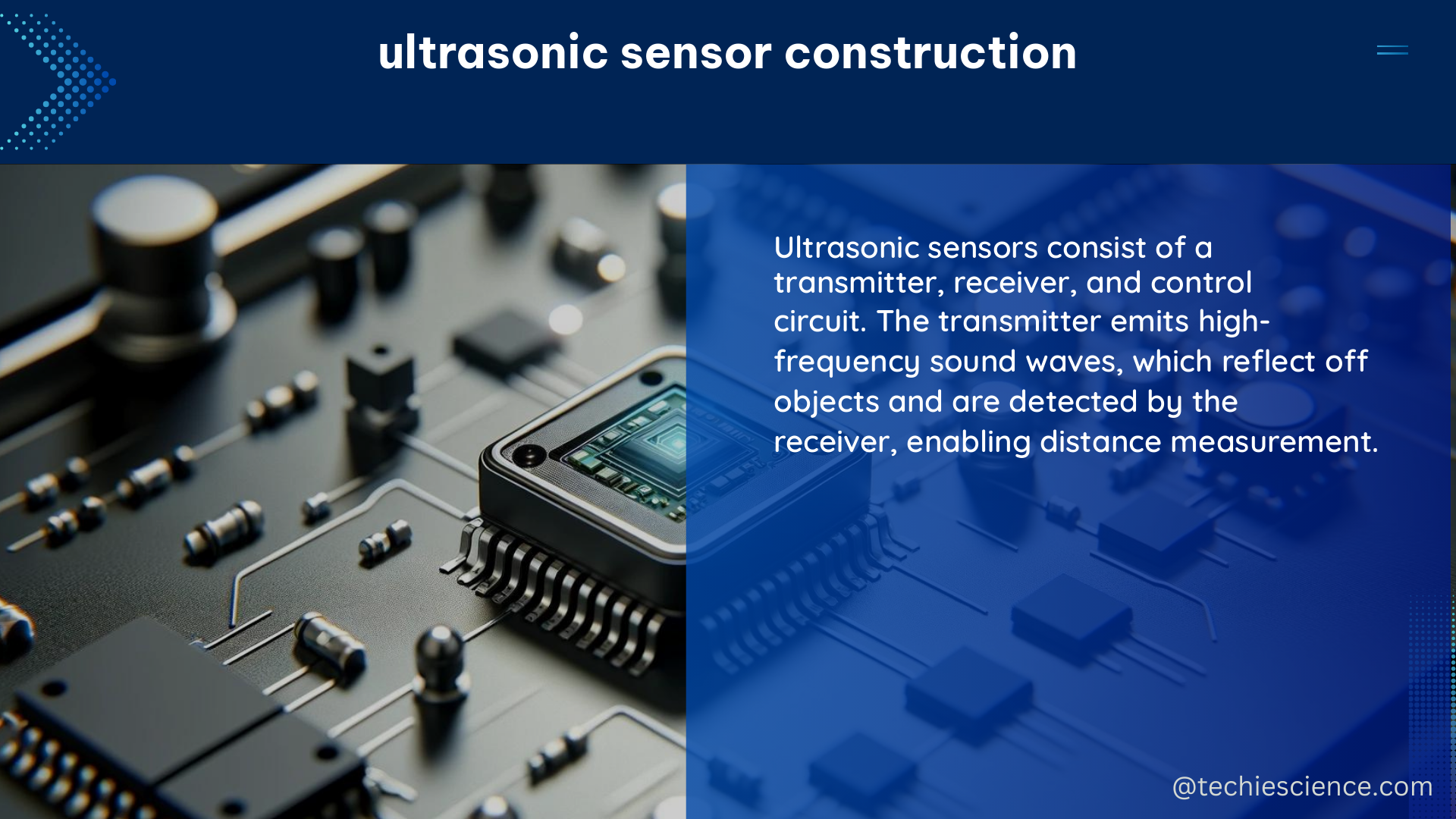Ultrasonic sensor construction involves the intricate process of assembling various components to create a device capable of transmitting and receiving high-frequency sound waves, typically above the range of human hearing. These sensors are widely used in diverse applications, including distance measurement, object detection, and level sensing, making them an essential tool in various industries.
Understanding Ultrasonic Sensor Components
The core components of an ultrasonic sensor include:
-
Ultrasonic Transducer: This is the heart of the sensor, responsible for converting electrical energy into sound waves and vice versa. Transducers can be piezoelectric, electrostatic, or magnetostrictive, each with its own unique characteristics and performance capabilities.
-
Transmitter Circuit: The transmitter circuit generates the electrical signals that drive the ultrasonic transducer, producing the high-frequency sound waves.
-
Receiver Circuit: The receiver circuit processes the reflected sound waves captured by the transducer, converting them back into electrical signals that can be analyzed and interpreted.
-
Microcontroller: A microcontroller, such as an Arduino or Raspberry Pi, is often used to control the sensor’s operation, process the received signals, and provide the necessary interface for data communication.
-
Housing: The sensor’s housing protects the internal components from environmental factors, such as dust, moisture, and physical damage, ensuring reliable operation.
Technical Specifications of Ultrasonic Sensors

The technical specifications of an ultrasonic sensor can vary significantly depending on the specific model and application. Let’s explore the key parameters:
| Specification | Example: UMP3 Ultrasonic Hydrostatic Leveler |
|---|---|
| Measurement Range | 40 mm |
| Resolution | 0.1 μm (0.0001 mm) |
| Long-term Stability | 5.0 μm (0.005 mm) over one year |
| Operating Temperature Range | -20 °C to +50 °C |
| Accuracy | ±0.1% of measured value |
| Beam Angle | 8° |
| Response Time | 50 ms |
| Power Supply | 12-30 VDC |
These technical specifications highlight the precision and versatility of ultrasonic sensors, making them suitable for a wide range of applications that require accurate distance measurement and object detection.
Measurable and Quantifiable Data
Ultrasonic sensors can provide highly accurate distance measurements, as demonstrated by various studies and research projects. For instance, a study on the construction of an ultrasonic sensor for material identification in robotic agents found that the sensor had a measurement error of less than 1% for distances up to 100 mm.
Another study focused on the use of UMP3 ultrasonic sensors to measure the inclination of a hydroelectric power block. The results, shown in Figure 6 of the study, illustrate the sensor’s ability to accurately track the inclination changes, with the blue and red zones indicating potential zero drift zones for the respective sensors.
DIY Ultrasonic Sensor Construction
For those interested in building their own ultrasonic sensor, there are numerous DIY projects and tutorials available. One such project involved the use of an ultrasonic sensor and an Arduino microcontroller to accurately measure distances using ultrasonic waves.
The project entailed the construction of a circuit to interface the ultrasonic sensor with the Arduino, as well as the development of code to read and display the distance measurements. This hands-on approach allows for a deeper understanding of the sensor’s inner workings and the ability to customize the sensor to meet specific requirements.
Conclusion
Ultrasonic sensor construction is a complex and fascinating field that combines electrical engineering, signal processing, and sensor technology. By understanding the key components, technical specifications, and measurable data, you can gain a comprehensive understanding of the capabilities and applications of these versatile sensors.
Whether you’re a hobbyist, a researcher, or a professional working in the field of robotics, automation, or industrial automation, mastering the art of ultrasonic sensor construction can open up a world of possibilities for your projects and innovations.
References
- Design and Construction of an Ultrasonic Sensor for the Material Identification in Robotic Agents. (n.d.). ResearchGate. Retrieved May 10, 2024, from https://www.researchgate.net/publication/221670821_Design_and_Construction_of_an_Ultrasonic_Sensor_for_the_Material_Identification_in_Robotic_Agents
- Ornoch, L., Popielski, P., Olszewski, A., & Kasprzak, A. (2021). Ultrasonic Sensors Enabling Early Detection of Emergency Trends and Analysis of Structure Inclination and Stability by Means Sensors. 2021, 21, 1789. MDPI. Retrieved May 10, 2024, from https://www.mdpi.com/1424-8220/21/5/1789
- DISTANCE MEASUREMENT USING ULTRASONIC SENSOR & ARDUINO. (2024, April 23). ResearchGate. Retrieved May 10, 2024, from https://www.researchgate.net/publication/367162982_DISTANCE_MEASUREMENT_USING_ULTRASONIC_SENSOR_ARDUINO

The lambdageeks.com Core SME Team is a group of experienced subject matter experts from diverse scientific and technical fields including Physics, Chemistry, Technology,Electronics & Electrical Engineering, Automotive, Mechanical Engineering. Our team collaborates to create high-quality, well-researched articles on a wide range of science and technology topics for the lambdageeks.com website.
All Our Senior SME are having more than 7 Years of experience in the respective fields . They are either Working Industry Professionals or assocaited With different Universities. Refer Our Authors Page to get to know About our Core SMEs.